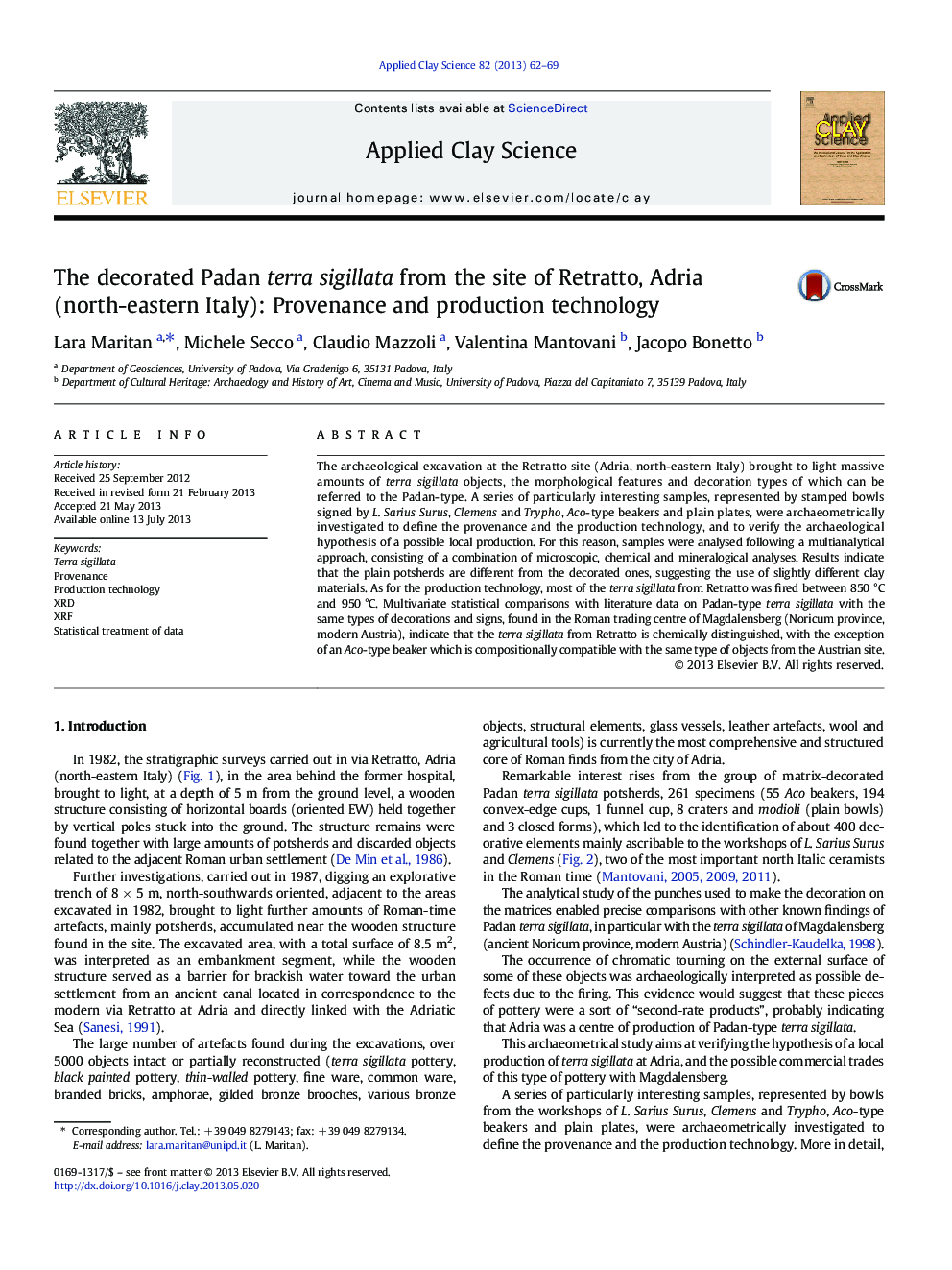| Article ID | Journal | Published Year | Pages | File Type |
|---|---|---|---|---|
| 1694929 | Applied Clay Science | 2013 | 8 Pages |
•Multi-methodological study of terra sigillata from Adria (north-eastern Italy).•Provenance and production technology.•Trades between north-eastern Italy and province of Noricum.•Terra sigillata from Retratto was fired between 850 °C and 950 °C.
The archaeological excavation at the Retratto site (Adria, north-eastern Italy) brought to light massive amounts of terra sigillata objects, the morphological features and decoration types of which can be referred to the Padan-type. A series of particularly interesting samples, represented by stamped bowls signed by L. Sarius Surus, Clemens and Trypho, Aco-type beakers and plain plates, were archaeometrically investigated to define the provenance and the production technology, and to verify the archaeological hypothesis of a possible local production. For this reason, samples were analysed following a multianalytical approach, consisting of a combination of microscopic, chemical and mineralogical analyses. Results indicate that the plain potsherds are different from the decorated ones, suggesting the use of slightly different clay materials. As for the production technology, most of the terra sigillata from Retratto was fired between 850 °C and 950 °C. Multivariate statistical comparisons with literature data on Padan-type terra sigillata with the same types of decorations and signs, found in the Roman trading centre of Magdalensberg (Noricum province, modern Austria), indicate that the terra sigillata from Retratto is chemically distinguished, with the exception of an Aco-type beaker which is compositionally compatible with the same type of objects from the Austrian site.
